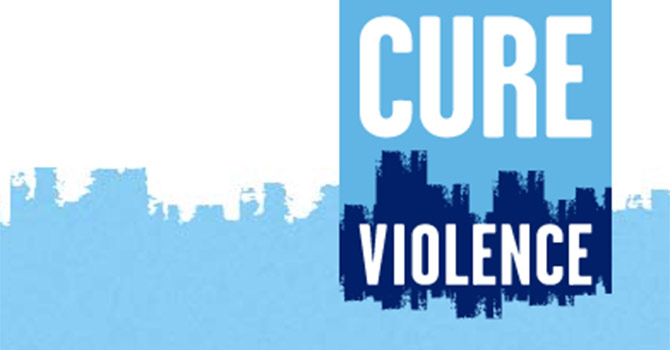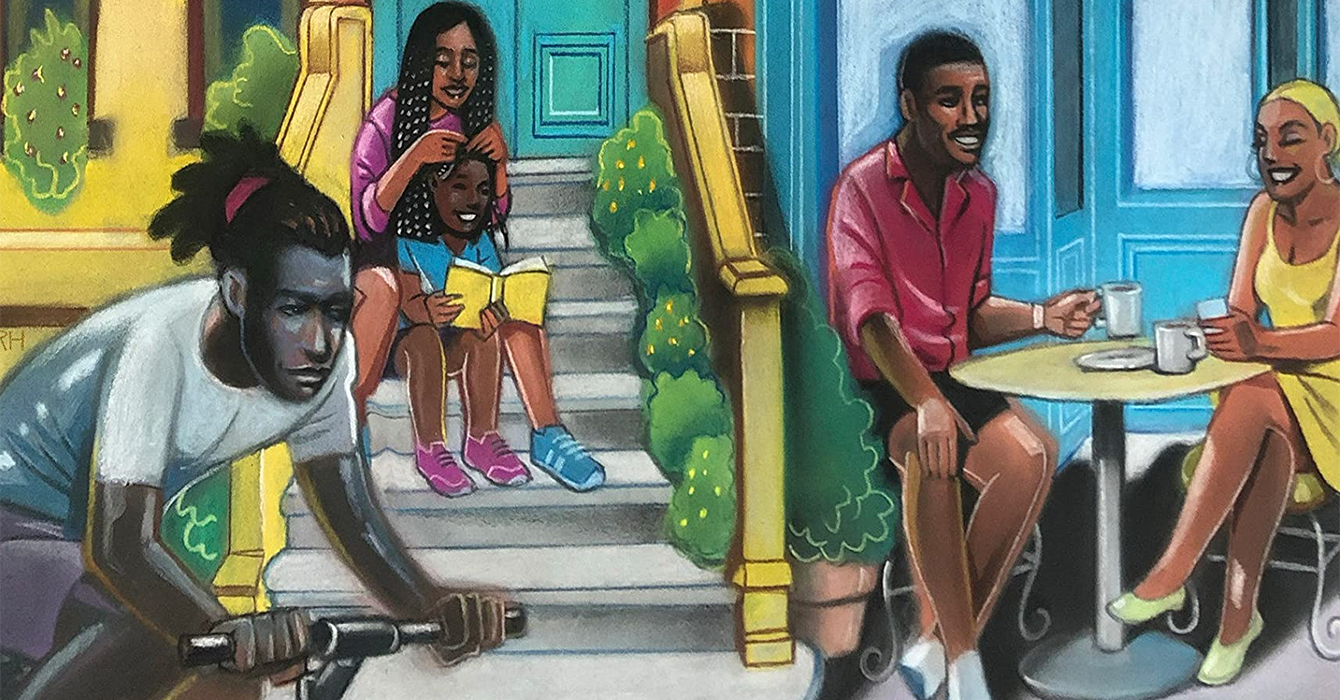The Rev. Tim White once ruled the drug-ravaged streets of his west Chicago neighborhood as the chief of one of the city’s most notorious gangs. Today, he spreads a message of peace at the funerals of people caught in the crossfire.
“There are a lot of mixed emotions at a funeral,” said White, who was serving a 10-year drug conspiracy sentence when he accepted Christ. Now, he’s often called to officiate at funerals of young people who have been killed in gang warfare. The soft-spoken junior pastor said, “It’s a good time for them to hear a different perspective. They usually just can’t believe it’s from me.”
White is one of more than 350 street-savvy ex-offenders hired as “violence interrupters” by CeaseFire, an organization that uses a public health approach to stopping the spread of violence.
CeaseFire, housed in the University of Illinois-Chicago’s School of Public Health and funded by $5.7 million in government and private grants, is successfully reducing gun-related deaths in Chicago by employing ex-offenders like White to “interrupt” violence and prevent it before it happens rather than punishing perpetrators after the fact.
CeaseFire gained recognition in the critically acclaimed documentary “The Interrupters,” released during the 2011 Sundance Film Festival, and was cited by social scientists Barry Schwartz and Kenneth Sharpe in their 2010 book, “Practical Wisdom: The Right Way to Do the Right Thing.”
But the greatest measure of success is in the numbers. In 2010, Chicago’s homicide rate was lower than it had been in 40 years. A Department of Justice-funded report by Northwestern University Professor Wes Skogan credits CeaseFire for helping turn the tide.
CeaseFire founder Dr. Gary Slutkin believes that violence can be eliminated not just in his hometown of Chicago but around the world within two generations.
“We have to first stop the thought that violence is an appropriate response. Then we have a chance to help people change their behavior,” Slutkin said, adding that America’s punitive approach is clearly not effecting change, nor is the message from the pulpit that people who do bad things are bad people.
“We put [people] in a category,” Slutkin said, “and we can’t think of it differently.”
An epidemic of violence
Slutkin is thinking about violence differently. To him, it has all the characteristics of an epidemic.
From the days of Al Capone and John Dillinger, Chicago has always been notorious as a violent city. In 2008, Chicago had 506 homicides, and an estimated 80 percent of those were gun-related deaths. This was a higher death toll than the 314 Americans killed that year in the war in Iraq. In 2010, there were more than 430 homicides in Chicago.
But violence is not inevitable. The key is to look at the problem in a new way and to employ new solutions, Slutkin said.
Instead of framing the conversation around moral notions of good and bad, Slutkin views violence as a disease, to be combated through a scientific approach. He is an epidemiologist who has spent most of his career working to address epidemics like cholera and AIDS for the World Health Organization in the developing world.
He points out that major infectious diseases and violence -- including war -- are the two mass killers of humankind. He sees many parallels between the major disease epidemics of the past and the “epidemic” of violence, and he is determined to apply the tools that were successful in combating the first category to conquering the second one.
Questions to consider:
- CeaseFire's interrupters' work is built on relationships in the community. Do you hire employees with ties to your community? How do you encourage employees to build and sustain relationships?
- The interrupters must learn to observe and listen to counsel well. What organizational structures have you created to nurture such practical wisdom?
- No one at CeaseFire works alone. Do you encourage employees to work together? Does your institution actively recruit partners who can help extend its impact?
- Slutkin's work is based on the hope that violence around the world can decline in two generations. Does your institution work out of a similar hope?
When he began to see violence as a disease -- a public health problem -- he created a response based on the idea that violence can be isolated and treated.
The key components of this infectious-disease approach are stopping transmission from individuals who are infected, identifying others who have the potential to spread the disease, and changing group norms so that dangerous behavior is no longer accepted.
Having used sex workers in Africa to help end the spread of AIDS, Slutkin saw the wisdom in employing street-savvy advocates to help stop the transmission of violence. Just as sex workers taught customers and friends about the benefits of using condoms and the consequences of unprotected sex, streetwise peer-mediators could help people with violent tendencies adopt healthier behaviors and safer lifestyles.
Slutkin established CeaseFire as a community-based outreach program in Chicago’s most dangerous neighborhoods in 2000, and since then the model has been refined and then replicated in 18 urban areas around the country.
Back on the street
Violence interrupters such as White are used in the first step of the process. As a medicine or vaccine might be employed to stop the transmission of an infectious disease, violence interrupters intervene to stop violent or potentially violent events from spreading.
Not long after White began working as a violence interrupter, for example, a man dropped $70 at a carwash. Another man was seen picking up the money, and a third called White, knowing that a dispute about even that small amount of money could turn deadly. The man who had dropped his money was spreading the word that he was going to get it back, “whatever it took.”
White spoke to the two men privately and then brought them together to negotiate a resolution. When discussions were at an impasse, White pointed first to the man who had dropped the cash and said, “I see you in the penitentiary.” Then he turned to the man who had picked up the money: “And I’ll be going to your funeral.”
The solemnity of White’s words, coupled with the respect he had gained as a fair, streetwise negotiator, set in. Two hours after the incident began, the $70 was returned, with no one disrespected and no one dead.
“That’s in essence what we are trying to do all the time -- make sure no one goes to the cemetery and no one goes to the penitentiary,” said Tio Hardiman, director of CeaseFire Illinois and creator of the violence interrupter component of the program.
Violence interrupters continue to do what they always have done -- walk the streets, talk to people, and keep their eyes and ears open for problems and potential resources. They are now armed with a uniform, business cards and anti-violence literature.
CeaseFire’s outreach workers and volunteers are on the streets, too, working on the second, longer-term step of the process, to identify people who are likely to commit violent acts or be victims. They model nonviolent behavior and seek to change people’s thinking, making them less “infectious” and less likely to continue the cycle.
They also help those who want to get off drugs, find jobs, go back to school or find the resources they need to take life in a new direction.
When violence happens, CeaseFire workers, participants and volunteers respond by organizing rallies and vigils and providing support for the families and loved ones of violence victims, both to ensure that there is no violent retaliation and to change the group attitude so that people can begin to believe their neighborhood can change.
The community structure includes a network of partners who are willing to support the program and spread the CeaseFire message through events and literature distribution in the communities it serves. Churches, organizations, businesses and individuals are all a part of the CeaseFire model, which calls for a community approach that doesn’t rely primarily on punishment.
“How can you say someone is bad who grew up seeing violence as a way of life -- the only way to survive?” Hardiman asks.
Building an organization
Hardiman met Slutkin in early 2000 at an anti-violence rally. The two shared ideas for transforming violent neighborhoods. Hardiman, then a community organizer, told the epidemiologist, “We’re going to make history.”
They began working together, and in 2004 Hardiman created the violence interrupters program to accompany the community outreach program Slutkin had already developed.
“CeaseFire recruited violence interrupters who already had the kind of experience they would need to succeed on the job. But then it created an organizational and community structure that gave the interrupters experiences that encouraged them to develop the practical wisdom needed to counsel well,” Schwartz and Sharpe write in “Practical Wisdom.”
The organizational structure includes an intensive 40-hour training program, supported by a professional system that gives violence interrupters both freedom on the streets and accountability in the office.
This is a different way of life for the violence interrupters and outreach workers; for most of them, CeaseFire is their first legitimate job. They have made money and lived according to the street rules, and now, as Hardiman said, “They are learning a whole new language.”
Accountability, deadlines, documentation, professionalism -- these are all new words for people who have made their money hustling drugs and protecting turf.
The violence interrupters are trading a familiar lifestyle for regular work hours, institutional policies and an attractive benefits package -- medical and dental insurance and a retirement plan.
Instruction in the 40-hour training program is designed for people who haven’t had a lot of formal education. A major portion of the training takes the form of role-play exercises in which these new public health professionals put into practice the concepts and theories of conflict mediation and negotiation, managing grief and loss, and evaluating and responding to high-risk situations.
A scenario involving trainees, for example, might put two violence interrupters together with three classmates pretending to be a belligerent drunk, an armed drug dealer and an older convict, said Marcus McAllister, CeaseFire’s national training director. Some of the trainees would be instructed to act receptive to the CeaseFire message and others to resist it.
Through role-playing, trainees learn how to approach and mediate conflict, and when to walk away from potential danger. They learn to work in teams, to identify resources and to protect themselves in a whole new way.
Both in the role-play and the feedback that follows, trainees learn systematic approaches that make their jobs easier -- documenting contacts with potential violent offenders and victims, developing risk-reduction plans prior to negotiating conflicts, and mapping their neighborhoods to get a clear view of the available information and resources, as well as potential conflicts that will be a part of their job every day.
McAllister, who started with CeaseFire as a violence interrupter in Waukegan, Ill., said helping ex-felons like himself professionalize their valuable skills and knowledge and make a positive contribution in the communities where they grew up is one of the most satisfying rewards of his job.
“I am very humble about all this,” McAllister said. “I know how hard it is for a felon like me to get a professional job. I learn as much from the people I train as they learn from me.”
On the streets
Once they are trained, violence interrupters begin their work, often on the streets where they grew up.
White said people in his old West Side neighborhood have come to respect him, but it’s a different kind of respect than he commanded when he was chief of the Traveling Vice Lords.
White said that even the most hardened gang members are vulnerable to a new message at funerals. So when asked, as a pastor, to lead a prayer vigil or preach at a funeral, he gladly takes the opportunity to spread CeaseFire’s message: Stop the killing, cease the fire, save the children.
He tells his own story of the gangster life, his years in prison and his life now. At 46, White works full time for CeaseFire, teaches Bible study on Sunday mornings at his brother’s Baptist church, Victory Christian International Ministries, and is attending college full time.
When White reflects on his life, he considers himself lucky to have made it to the penitentiary -- and back.
Today, he’s a proud and engaged father of four children, and a son of parents who are proud of him. His older son, Tim Jr., who was born two weeks before White went to prison, is an accomplished recording artist and music minister. His two daughters have graduated from college, and his younger son is earning his education on a football scholarship. “I go to every game,” White said.
His four children, he says, are living examples of the difference a generation can make.






